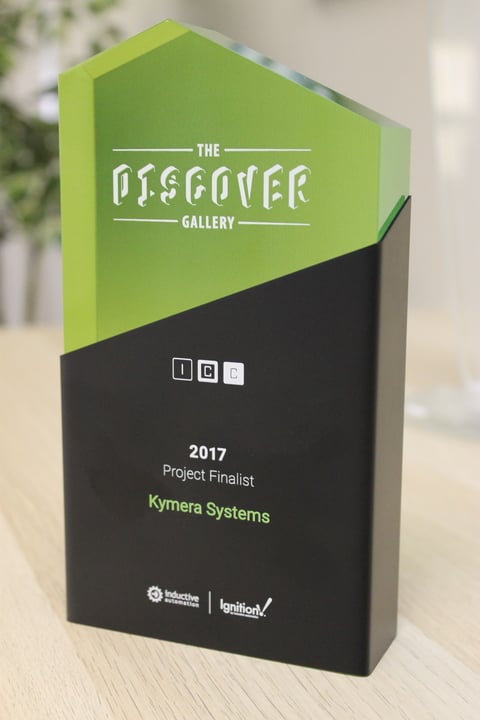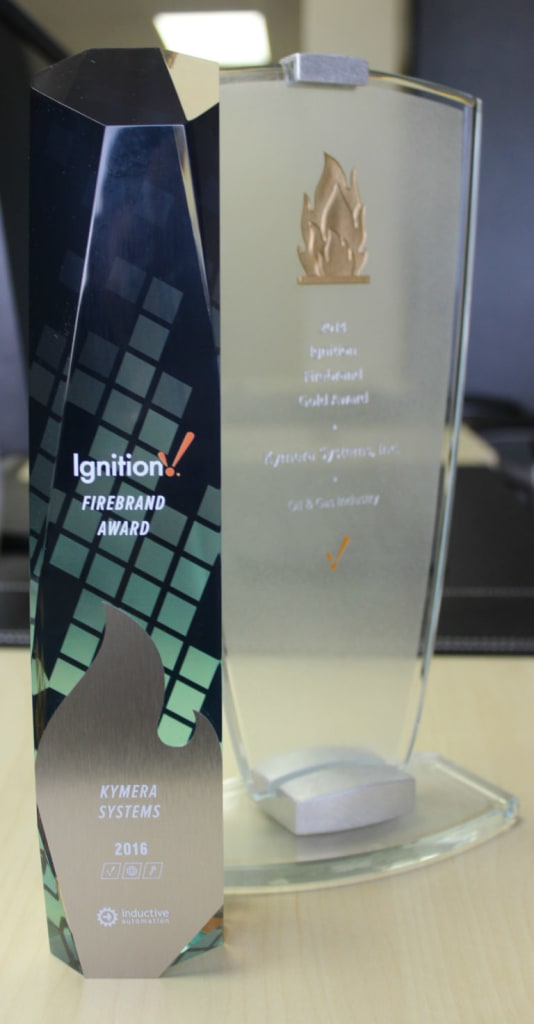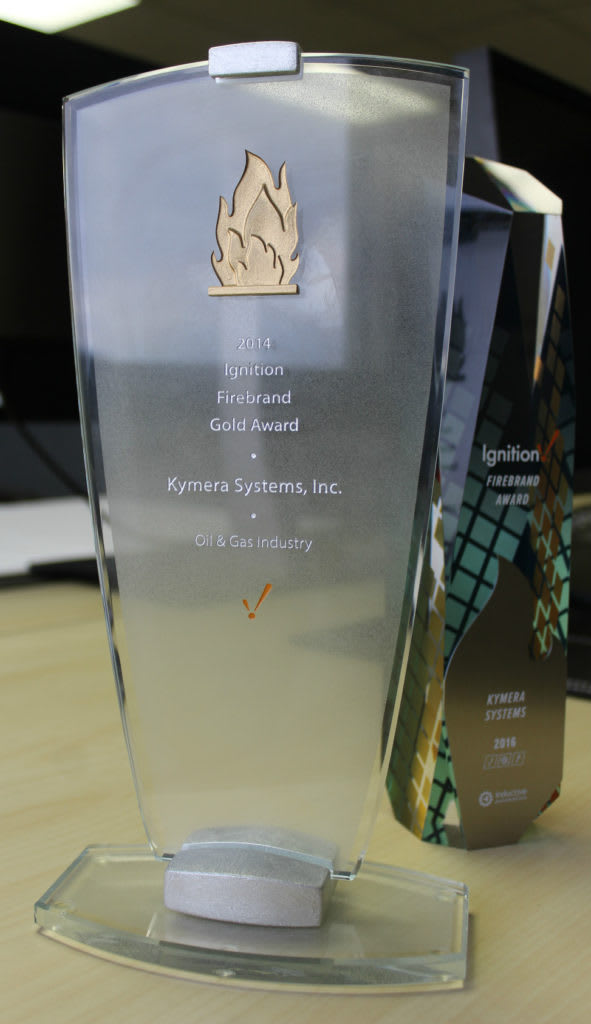OUR AWARDS
That’s right, we’ve won awards and we’re proud of them. Have a look!
2017 PROJECT FINALIST
PROJECT FOR
Helios Holdings
Helios is a Japanese company coordinating the deployment of an updated gas utility solution for the KGDCL Gas Company in Bangladesh.
PROJECT SCOPE INFORMATION
30 Screens
50 Clients
3 Ignition servers (master-backup pair at the primary site, and a failover server at a disaster recovery site)
3 MariaDB servers, in a layout that physically matches the Ignition servers
Galera replication, to facilitate synchronization of data between databases
At scale, will receive historical data from up to 600,000 meters
PROJECT OVERVIEW
The HIT System is an Ignition-powered application designed to facilitate more accurate gas utilities monitoring in Bangladesh. It includes a CRM for managing customers as well as a data storage and analysis portion that runs against incoming gas usage statistics.
Consumers of natural gas in Bangladesh currently pay a fixed-rate fee each month, based on the number of gas-consuming appliances on the property (stove, water heater, etc.). It is estimated that the error in gas consumption could be as high as 50 percent.
Kymera was contracted by Helios to design and develop the software portion of the solution to change gas utilities monitoring in Bangladesh from flat-rate billing to a pre-paid system. Under the pre-paid system, customers visit a manned point of sale (POS) connected to the HIT System, bringing with them an NFC card paired with their gas meter. When they purchase gas at the POS, Kymera reads the latest information about the meter from the card (like the consumption history, any alarms from the meter), and charges the card with the new volume of gas. The customer can then return to their meter and add the volume of gas to the meter, which will run until the gas is consumed.
The HIT System consists of three key parts:
The CRM drives the organization of all account information. It facilitates the creation of new accounts, modifying existing accounts, and the viewing of the account histories. This represents the bulk of the application in terms of the user interface.
The Card Reader is a custom Ignition module Kymera developed that provides several scripting functions and callbacks for interacting with a Sony NFC card reader. It ultimately powers all communication between the HIT System and the meters.
The Analysis is driven partially by Ignition’s reporting software, and partially by Kymera’s library of analysis scripts. In addition to providing data in aggregate (such as a customer’s purchase history or their meter’s consumption history), the Analysis also drives the detection of anomalies in the customer data. It automatically searches for deviations in the customer’s purchase frequency and volume, detects leaks in the meter, and verifies that the customer’s purchased gas is consistent with the gas being consumed by their meter.
The solution provides a web API for interface by third-party payment providers, the gas company’s existing management system, and a mobile POS app developed by another project partner.
Kymera plans to make this a “drop-in” software solution, as it begins to distribute it to other regional gas companies in Bangladesh.


2016 FIREBRAND AWARD
PROBLEM
The client has an aging system, Siemens FactoryLink, that is at the verge of discontinuation, and they must be upgraded to one that is currently supported while also bringing upon improvements to rationalize the cost of the change. The challenge is to create a system that is able to tie together all the legacy devices with their wide range of configurations and transition to Ignition within a set of defined phases. The current Ignition system has 518,000 tags with 10-12 clients connected to: Kepware (600 FloBoss100 series, 50 FloBoss300 series, five SCADAPacks), Ignition (four ControlLogix, four 4 SLCs) and DeltaV via OPC-DA. All history is being stored in a SQL Server 12.000 installation on the central server.
SOLUTION
In order to meet the client’s requirements, we set up hub-and-spoke architecture. The hub houses all screens and non-transferable artifacts and the spokes house local tags and a set of screens to use for local redundancy. From a hub-based client, users are able to view any site to any level of granularity. If the connection to the hub is disrupted, the spokes still have access to their local screens and data. The GAN (gateway area network) allows Ignition to use remote tag providers which allow for such decentralization of tags, while also allowing all the sites to be centralized to one area. Alarm state is passed through the GAN for dissemination by the central server.
RESULT
Ignition has allowed the client to upgrade its SCADA system without upgrading the legacy hardware. The flexibility and intelligent scripting driving our data collection for the client’s accounting system has mitigated both connectivity issues and the frequency of collected errors, drastically reducing the requirement for human intervention. Our communications metrics provide actionable information on underperforming devices which in turn allows the administrators to target devices for reconfiguration or replacement. The metrics can also provide valuable comparisons of the effectiveness of configuration changes to the communication network. Kymera standardized the data and display of the assets and together with the GAN architecture the client is now able to visualize the entire system from one client.
In the future Ignition will provide an interface for recording notes, calibration and testing of the client’s assets. We plan to integrate a system for organizing, planning and entering the results of these functions. In the future, this instance of Ignition will incorporate three more spokes, hundreds of new devices and thousands of tags. Once fully integrated we will be able to replicate the reports currently in use and Ignition will have replaced all of the functions of the previous system.
2016 FIREBRAND AWARD
PROBLEM
The client has an aging system, Siemens FactoryLink, that is at the verge of discontinuation, and they must be upgraded to one that is currently supported while also bringing upon improvements to rationalize the cost of the change. The challenge is to create a system that is able to tie together all the legacy devices with their wide range of configurations and transition to Ignition within a set of defined phases. The current Ignition system has 518,000 tags with 10-12 clients connected to: Kepware (600 FloBoss100 series, 50 FloBoss300 series, five SCADAPacks), Ignition (four ControlLogix, four 4 SLCs) and DeltaV via OPC-DA. All history is being stored in a SQL Server 12.000 installation on the central server.
SOLUTION
In order to meet the client’s requirements, we set up hub-and-spoke architecture. The hub houses all screens and non-transferable artifacts and the spokes house local tags and a set of screens to use for local redundancy. From a hub-based client, users are able to view any site to any level of granularity. If the connection to the hub is disrupted, the spokes still have access to their local screens and data. The GAN (gateway area network) allows Ignition to use remote tag providers which allow for such decentralization of tags, while also allowing all the sites to be centralized to one area. Alarm state is passed through the GAN for dissemination by the central server.
RESULT
Ignition has allowed the client to upgrade its SCADA system without upgrading the legacy hardware. The flexibility and intelligent scripting driving our data collection for the client’s accounting system has mitigated both connectivity issues and the frequency of collected errors, drastically reducing the requirement for human intervention. Our communications metrics provide actionable information on underperforming devices which in turn allows the administrators to target devices for reconfiguration or replacement. The metrics can also provide valuable comparisons of the effectiveness of configuration changes to the communication network. Kymera standardized the data and display of the assets and together with the GAN architecture the client is now able to visualize the entire system from one client.
In the future Ignition will provide an interface for recording notes, calibration and testing of the client’s assets. We plan to integrate a system for organizing, planning and entering the results of these functions. In the future, this instance of Ignition will incorporate three more spokes, hundreds of new devices and thousands of tags. Once fully integrated we will be able to replicate the reports currently in use and Ignition will have replaced all of the functions of the previous system.

2014 FIREBRAND AWARD
PROBLEM
Enerchem was operating with an antiquated control system. The system was very unreliable, often crashing during operation. There was also a lack of remote access to the system, and the solution was to use GoToMyPC, which did not work very well, and used a control station on site. Every control terminal required software licensing and installation. All of the reporting was done manually, and if a day or load got missed, it was either lost or had to be entered by hand.
There was also limited trending support, and no database, so custom functionality was out of the question. Everything was operating on a single server, so a loss of a server would result in downtime and a loss of data.
SOLUTION
Ignition provided a central install for all of Enerchem’s control information. Kymera initially moved the reporting requirements into FactoryPMI/FactorySQL. Once Ignition was released, Kymera moved the other facilities to Ignition first, as they were smaller. The unlimited clients allowed Kymera to place clients where they didn’t have them before, both on site and remotely. Being database-centric, Kymera was able to build other custom logic into the HMI that would have been cumbersome with other packages. Having built-in redundancy, Enerchem now has a reliable and flexible system to meet its needs.
Enerchem’s logistics rely heavily on Ignition. Kymera is able to place the information in the right hands at the right time, to help optimize Enerchem’s operations. The size of the project is also unique, with strict requirements for speed, reliability and functionality.
RESULT
Enerchem now has remote access for controls and reporting to each facility. By using the information provided, product yield increased from 50% to 60%. Overall reliability has increased. Problems can be diagnosed as they are forming and can be fixed before they become a downtime issue. Real-time inventory at Enerchem facilities allows the business to run more efficiently. Real-time inventory reporting allows Enerchem to supply their customers with products on a very large scale. With today’s horizontal drilling, frac jobs have increased to an average of 200 m³ and upwards of 36,000 m³ demand for a single well site or pad. The new system has helped Enerchem become the biggest frac fluid supplier in Canada. Enerchem’s base oils need to have extremely accurate controls to ensure they meet all of the product’s specifications. Without Ignition, Enerchem could not reliably produce a base oil that is BTEX-free. Its completely cross-platform architecture allows easy integration of new or exotic hardware.







